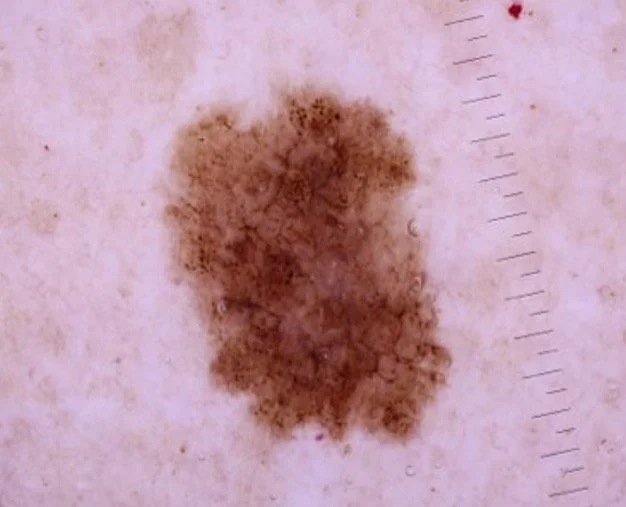
Melanoma
Melanoma is a form of skin cancer that arises when melanocytes, the pigment-producing cells in the skin, undergo mutations and grow uncontrollably. It can be life-threatening if it spreads to other parts of the body. A particularly early and localized form of this cancer is melanoma in situ, where the abnormal cells are confined to the outermost layer of the skin (the epidermis) and have not yet invaded deeper tissues. At this stage, melanoma is highly treatable, and the prognosis is generally excellent. Melanoma in situ is often detected through skin checks and can be removed surgically with minimal risk of further complications, highlighting the importance of catching the disease early.
Melanoma’s most commonly appear as an asymmetric pigmented lesion on the skin. They frequently look different to normal naevi (moles) and will change in size and/or colour over time. However some melanoma’s can be very difficult to distinguish between a mole or other benign lesions and are sometimes only pink in colour.
Early detection of melanoma is crucial for survival because it significantly reduces the chance of the cancer spreading. When diagnosed at an early stage, the five-year survival rate is around 99%, while it drops dramatically for more advanced stages. Regular skin checks by professionals, are essential. People are encouraged to look for the "ABCD" signs of melanoma: Asymmetry, Border irregularity, Color variations, Diameter larger than 6 mm, as well as “EFG”: elevated, firm and growing. Dermoscopy and biopsy are commonly used to further evaluate suspicious lesions. Early removal of melanoma can prevent its progression to more aggressive stages that are harder to treat.
The primary cause of melanoma is ultraviolet (UV) radiation exposure, primarily from the sun but also from artificial sources like tanning beds. UV radiation damages the DNA of skin cells, leading to mutations that can cause cancer. Risk factors for developing melanoma include a history of intense, intermittent sun exposure, especially during childhood, fair skin that burns easily, a family history of melanoma, and the presence of numerous or atypical moles. Individuals with weakened immune systems or genetic predispositions, such as those with mutations in the CDKN2A gene, are also at higher risk. Preventive measures, such as avoiding excessive sun exposure, wearing protective clothing, and using broad-spectrum sunscreen, play a critical role in reducing melanoma risk.
-

Invasive Melanoma
-

Melanoma in situ
-

Melanoma in situ